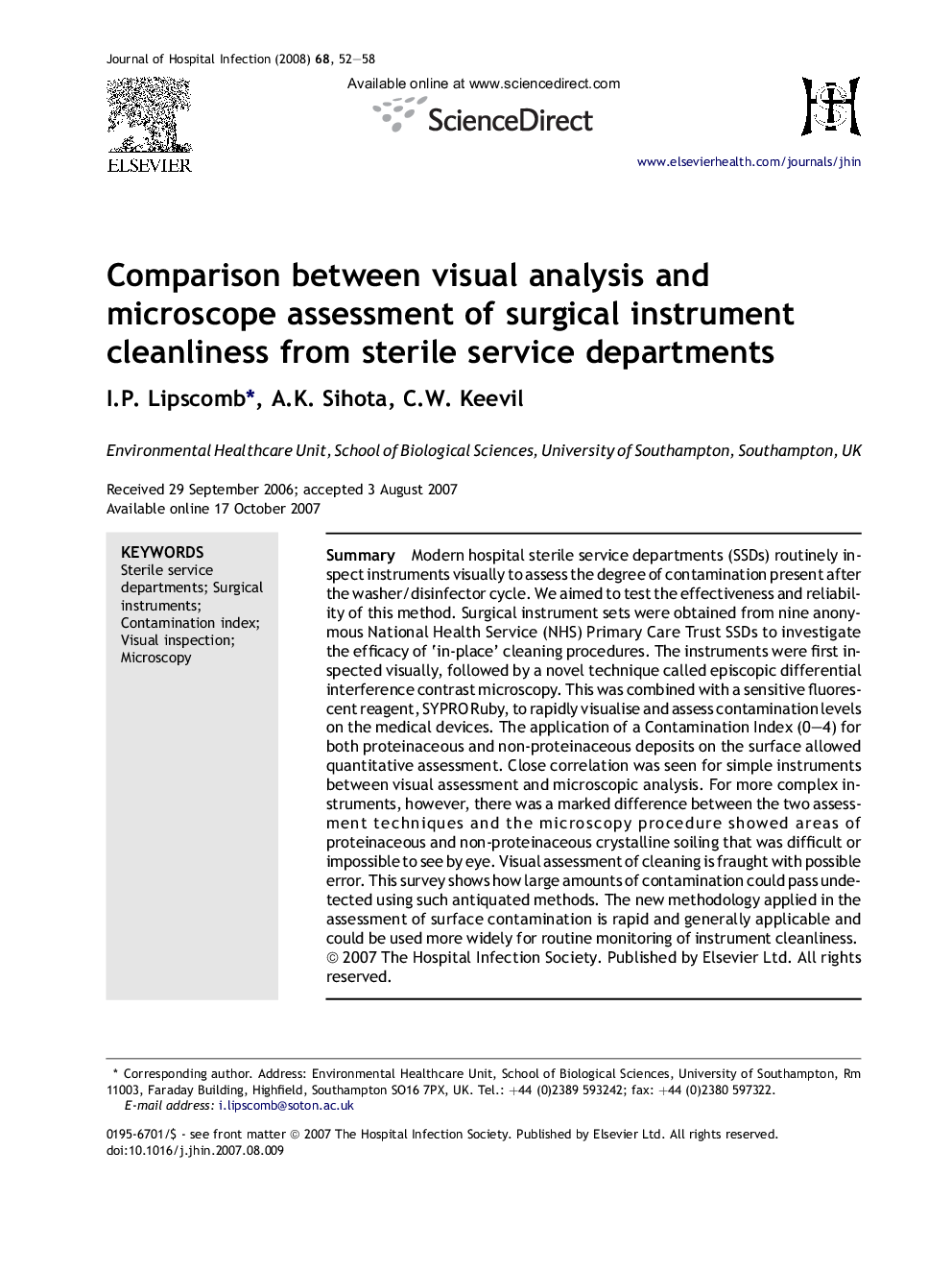| Article ID | Journal | Published Year | Pages | File Type |
|---|---|---|---|---|
| 3373468 | Journal of Hospital Infection | 2008 | 7 Pages |
SummaryModern hospital sterile service departments (SSDs) routinely inspect instruments visually to assess the degree of contamination present after the washer/disinfector cycle. We aimed to test the effectiveness and reliability of this method. Surgical instrument sets were obtained from nine anonymous National Health Service (NHS) Primary Care Trust SSDs to investigate the efficacy of ‘in-place’ cleaning procedures. The instruments were first inspected visually, followed by a novel technique called episcopic differential interference contrast microscopy. This was combined with a sensitive fluorescent reagent, SYPRO Ruby, to rapidly visualise and assess contamination levels on the medical devices. The application of a Contamination Index (0–4) for both proteinaceous and non-proteinaceous deposits on the surface allowed quantitative assessment. Close correlation was seen for simple instruments between visual assessment and microscopic analysis. For more complex instruments, however, there was a marked difference between the two assessment techniques and the microscopy procedure showed areas of proteinaceous and non-proteinaceous crystalline soiling that was difficult or impossible to see by eye. Visual assessment of cleaning is fraught with possible error. This survey shows how large amounts of contamination could pass undetected using such antiquated methods. The new methodology applied in the assessment of surface contamination is rapid and generally applicable and could be used more widely for routine monitoring of instrument cleanliness.
